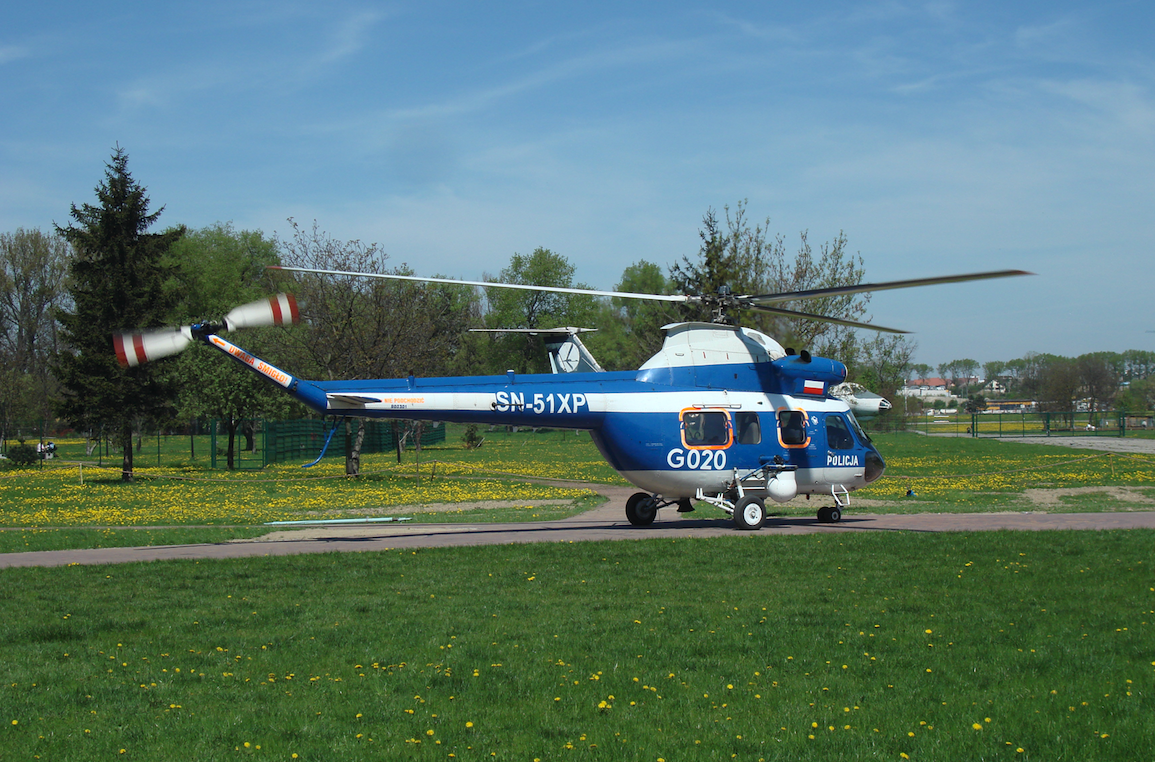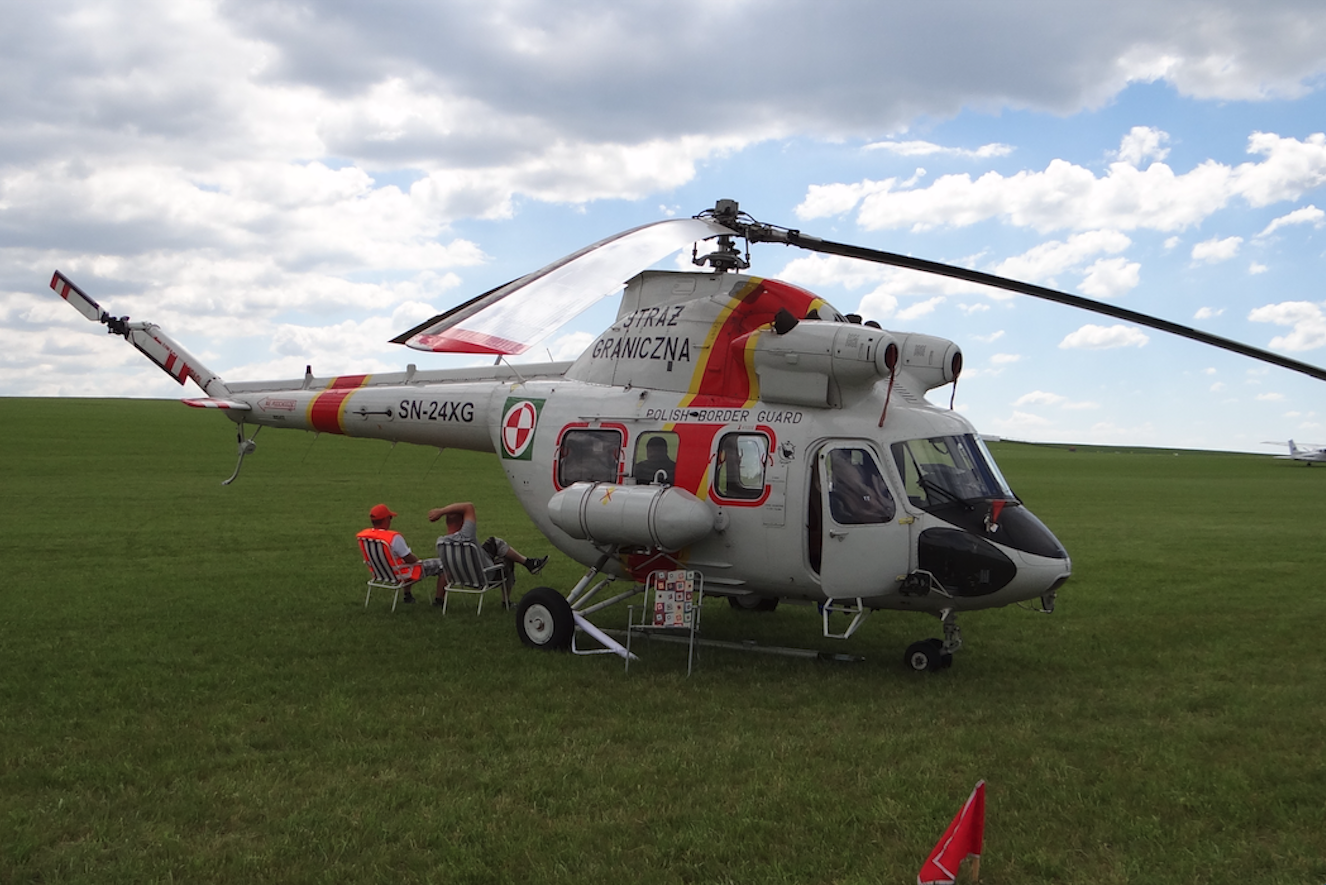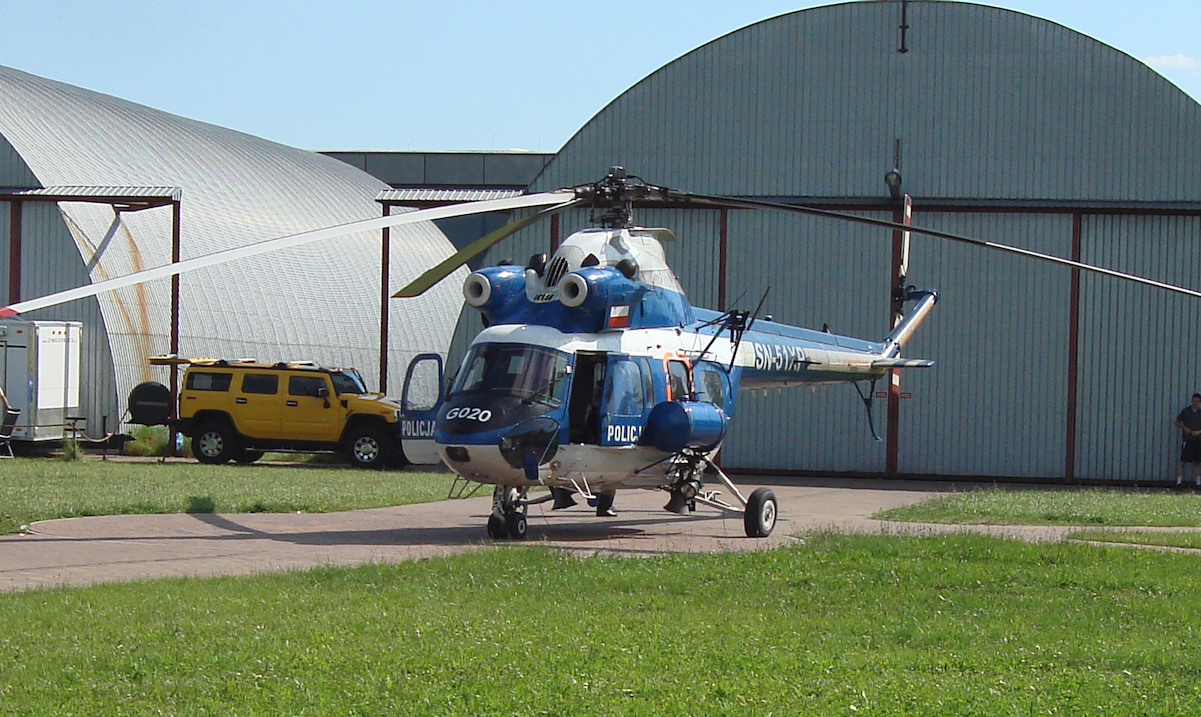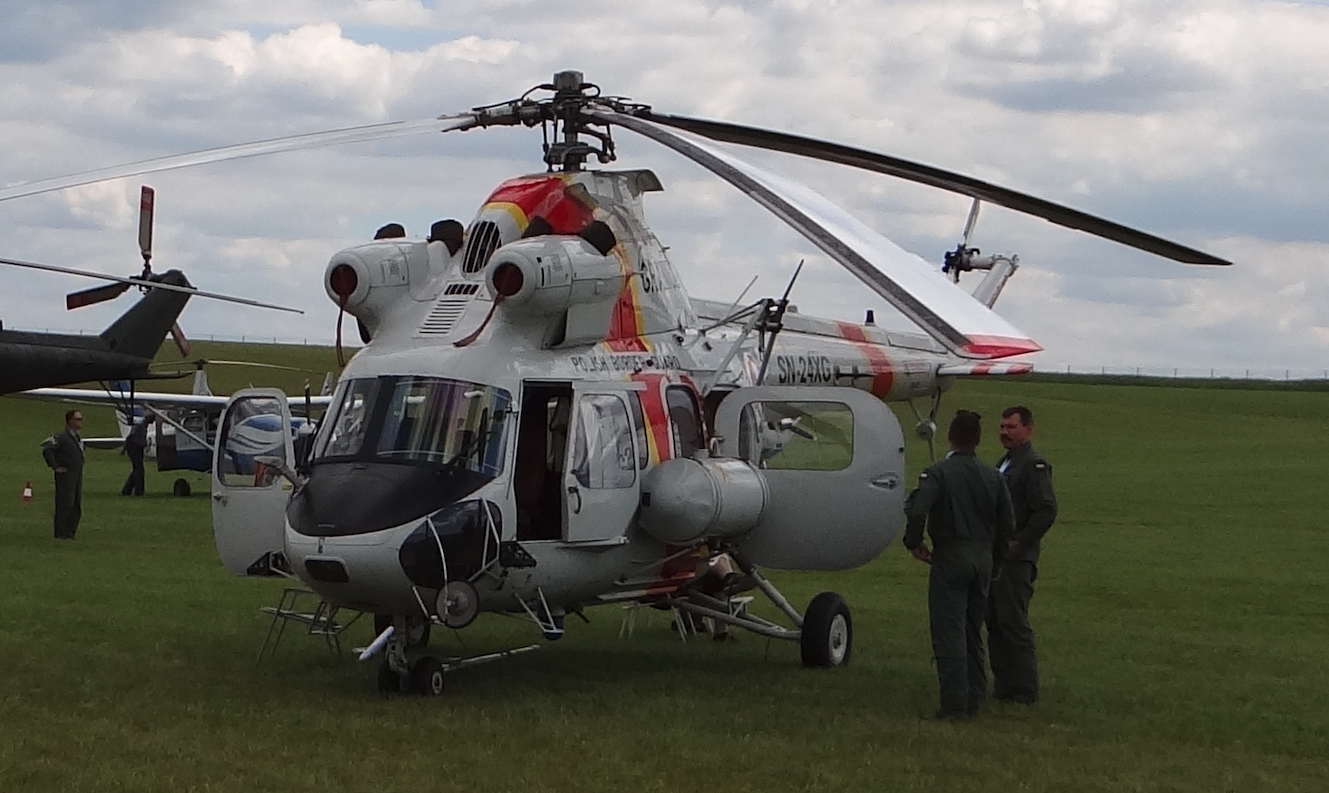Kraków 2018-01-15
PZL Mi-2 Kania.
247a Section 3.06.1979 year.
PZL WSK Świdnik: Mi-2 Kania, PZL Kania, PZL Kitty Hawk, PZL Taurus.
Poland
PZL Mi-2 Kania is a medium helicopter that was produced at WSK PZL Świdnik. The helicopter is a modernized PZL Mi-2 helicopter with Western engines.
History PZL Mi-2 Kania.
Why was it decided to develop the PZL Kania helicopter?
In a relatively short time, the team of WSK PZL Świdnik designers developed a new helicopter for the Western market. Therefore, the helicopter has two names: PZL Kania and PZL Kitty Hawk. Under the latter name, the helicopter was promoted in the West. If the helicopter were to be used in the West, it would bring convertible currency to the Polish economy.
The PZL Mi-2 helicopter was a relatively good and relatively cheap helicopter. However, it could not be sold to the West for so-called hard currency for several reasons. Firstly; it was not made according to Western regulations, and this made it difficult to obtain certificates in the USA or UK. Secondly; Although the engines were manufactured by WSK PZL Rzeszów, the company had no service in the West. Customers would prefer Western engines, which would be easier to service. Besides, Western engines were more economical. Thirdly; the helicopter needed new piloting and navigational instruments.
Therefore, it was decided to adapt the PZL Mi-2 helicopter to the American FAR 29 regulations. The PZL Kania helicopter was built at the Research and Development Plant of WSK PZL Świdnik. The manager was Stanisław Kamiński, MSc. The leading constructor from the beginning of work until October 1987 was Eng. Stanisław Markisz, and then MSc. Eng. Stanislaw Szeląg. Basic changes in the drive system were developed by mgr. Eng. Bartholomew Koper. The PZL Kania helicopter was flown by test pilot Eng. Zbigniew Debski.
The PZL Kania helicopter is a deep modification of the PZL Mi-2 helicopter. The helicopter takes 9-10 people on board. Constructors have introduced many modern construction solutions. The service life of the structure has been increased. Helicopter operation has been simplified. The blades of the main rotor and the tail rotor are made of metal, fiberglass and epoxy resins.
The basic change was the replacement of the engines with Allison Model 250-C20B, with a take-off power of 313.5 kW (426 hp). The engine is of similar design and layout to the GTD-350. Thanks to this, it could be relatively easily adapted to the drive using an adapter. The engine has almost twice as much weight. It has 30% less fuel consumption. The new drive provided higher cruising speed, greater range, 500 kg more payload and other improvements. The Allison Model 250-C20B engine allows the PZL Kania helicopter to continue flying on one engine, while the GTD-350’s single engine only gave the pilot more time to select an emergency landing site.
Adapters were inserted between the Allison Model 250-C20B engines and the WR-2 transmission due to the different shaft exit from the free turbine. As a result, the hood of the drive unit has changed.
A torque synchronization and stabilization device is incorporated into the drive. The system included emergency manual control, which was not present in the PZL Mi-2. The PZL Kania helicopter is controlled by three hydraulic amplifiers: longitudinal control, transverse control and overall pitch control. The control and control system of the drive unit was developed by Insco International. The power corrector on the general stroke lever was eliminated, and its role was taken over by the operating mode levers controlling the compressor regulator. The set of piloting and navigational instruments is from King Radio. This kit is more than enough for safe day and night flying. The predecessor, the PZL Mi-2 helicopter, does not have the ability to fly without visibility of the ground.
Major changes have taken place in the electrical installation. Lear Siegler current-starters were used. Typical acid batteries were replaced with Varta gel batteries.
The purposefulness of the work was assessed on the so-called Model 0 (Zero), in which only the engines and what is associated with them were replaced. One of the PZL Mi-2 helicopters, which belonged to WSK PZL Świdnik, was rebuilt. In April 1979, its ground tests began. At that time, PZL Kania No. 1, factory number 90.01.01, was about to be completed. On June 3, 1979, the PZL Kania helicopter was flown, just five months before the first PZL Sokół flight. On October 1, 1981, DGLC (Directorate General of Civil Aviation) issued a certificate which is an extended type certificate of the PZL Mi-2 helicopter for the modification carried out.
In the period 1979-1981 the following changes were made to PZL Kania:
Laminate main rotor and tail rotor blades were used. The horizontal empennage was made of laminate. New engine control system with automatic engine torque synchronization and additional manual engine torque synchronization. New shafts transmitting rotations from the engines to the final drive in adapters, made of duralumin. A new shaft transmitting rotation from the WR-2 main gearbox to the tail rotor, which is made of duralumin tube. A new fuel system has been developed. Each engine is powered by a different fuel system from a single fuel tank. The oil system has been changed. New means of ongoing control. A sensor is mounted on the magnetic plugs that collect oil filings, which causes the warning lamp on the control panel to light up. The freewheel clutch in the WR-2 transmission has been modified. In place of gimbal joints, spline connections were used, as in PZL Sokół. New engine hoods and a deflector on the fairing of the final drive were used. The cabin of the crew and passengers received additional soundproofing. The instrument panel has been redesigned due to new gauges and clocks. Some of the instruments of Polish production of PZL were left, such as; KI-13AK magnetic compass, KES-2097 fuel gauge, PL-300 speedometer, WRK-20 variometer, GZ-08k turn indicator, ACzA-1 timer, RL-13 work time counter, PW-12 FK altimeter. But Western instruments appeared: Sperry’s GH-209 artificial horizon, Flight Component’s G-213B1-16 artificial horizon, King’s KCS-55 gyro compass, King’s KI-525A horizontal situation indicator, two King KY-196 VNF radios. , King KMA-24H on-board phone, King KNS-81 navigation computer, King KN-53 VOR/LOC/GS receiver, King KR-87 radio compass, King KMG-675 marker receiver, King KT-79 transponder , rangefinder DEM KN-63 by King, instruments for controlling the operation of the propulsion system by INSCO.
The helicopter configured in this way was designated PZL Kania Model 1. It was flown on August 17, 1982. It had to obtain a new type certificate and a new instruction manual.
The power unit of the helicopter underwent many hours of tests on the dynamometer. The helicopter prototype then underwent 200 hours of ground testing of the powerplant. Individual subassemblies of the helicopter were also tested. A lot of time was spent testing the hydraulic control systems and the electrical system, which is completely new.
Replacing the engines resulted in a significant improvement in the helicopter’s performance compared to the Mi-2. The range and ceiling of the machine increased significantly. A measurable benefit is the increase in payload from 700 kg to 1,200 kg. The curb weight of the helicopter decreased by about 200 kg. Specific fuel consumption decreased by 30%. Range increased by about 30%. As a standard, PZL Kania takes 9 passengers on board, while the PZL Mi-2 takes 8 passengers. In the agricultural version, PZL Kania takes 200 kg more chemicals.
On February 21, 1986, the General Directorate of Civil Aviation issued type certificates for the PZL Kania helicopter in accordance with the American FAR 29 regulations. The PZL Kania transport helicopter was classified as category B with category A drive insulation. The certificate applies to use in a moderate climate.PZL Kania was offered in similar versions as PZL Mi-2:
Basic version; standard passenger, luxury passenger, sanitary, school, transport.
crane and rescue version; land and sea. It has a winch with a lifting capacity of 275 kg, instead of the previous one with a lifting capacity of 120 kg.
Agro version for agriculture and forestry.
special versions; at the customer’s request with special equipment.
Production of PZL Kania.
One pre-prototype helicopter (model 0), one complete flying prototype (No. 90.01.01, model 1), and three pre-production helicopters were built. They have factory numbers 90.01.02, 90.01.03 and 90.01.04. The copy 90.01.03 was made as a two-steerer. It was used for pilot training as well as additional testing. In 1988, PZL Kania 90.01.02, 90.01.04 helicopters were leased and performed flights in Sierra Leone as disposable machines.
In 1988, another five machines of the PZL Kania information series were in production.
In 1988, the plans of PZL Świdnik included a version with more powerful Allison Model 250-C20R engines, with a power of 331 kW (450 hp). Such a change would allow the helicopter to be operated in hot climates, and would also improve the flight characteristics on a single engine. The helicopter would be in category A, with the possibility of operation in a tropical climate.
Date T-T PZL Kania:
Diameter of the main rotor 14.56 m. Total length 17.35 m. Length of the fuselage 11.94 m. Width of the fuselage 3.25 m. Height without tail rotor 3.75 m. Curb weight 2,000 kg. Take-off weight 3,550 kg. Payload weight 1,200 kg. Weight of load suspended outside 800 kg. Fuel in the internal tank 600 liters. Top speed 210 km/h. Cruising speed 160 – 200 km/h. Vertical climb 7.93 m/s. Climb with cruising power of 5.90 m/s. Service ceiling 4,000 m. Hovering ceiling without ground effect 1,090 m. Hovering ceiling with ground effect 1,800 m. Range 402 km with a 30-minute reserve. Maximum range of 710 km with additional tanks with a 30-minute reserve. Flight time 2 hours 20 minutes with a 20-minute reserve. Flight time with auxiliary tanks 5 hours 20 minutes with a 20-minute reserve.
Written by Karol Placha Hetman




